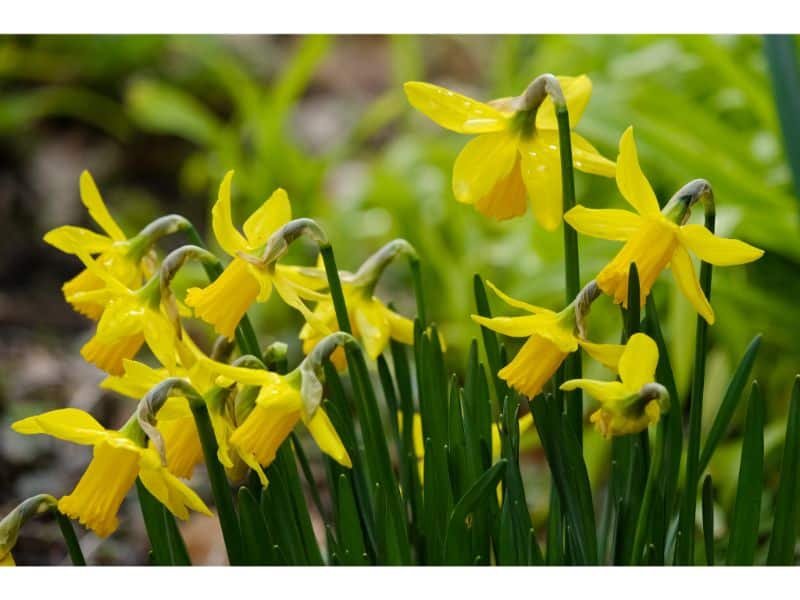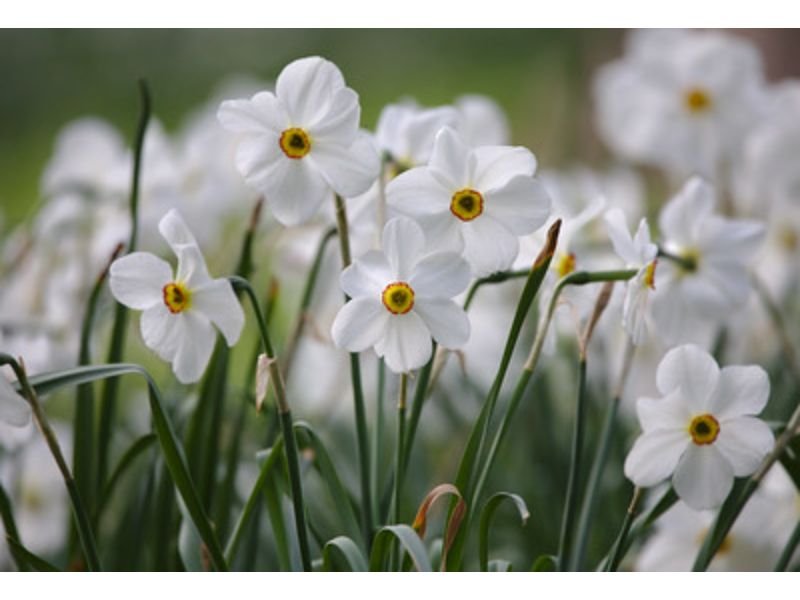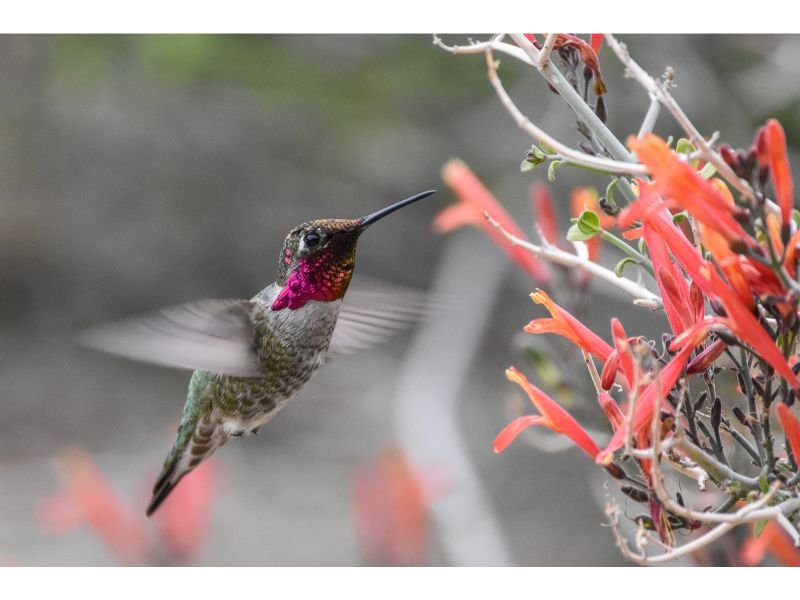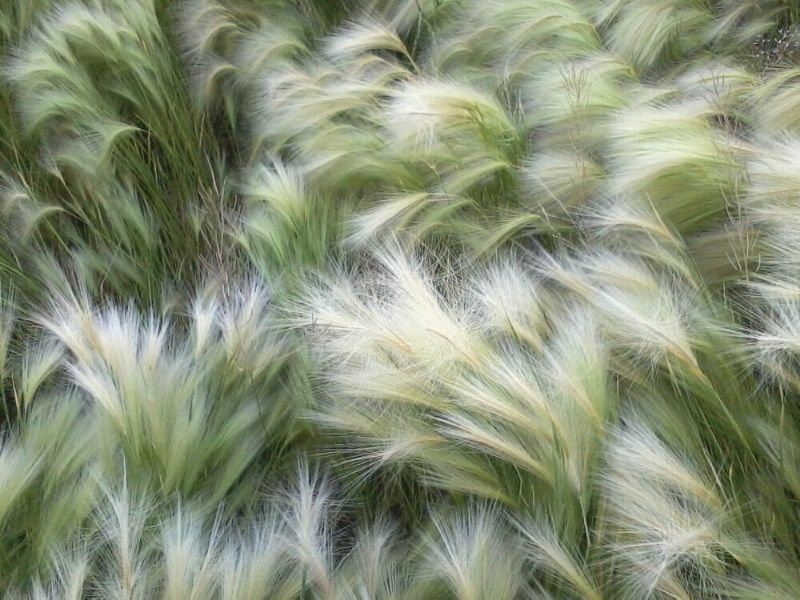Wild daffodils, also known as Lent lilies or Narcissus pseudonarcissus, grace Europe’s landscapes with their vibrant presence each spring.
Wild daffodils, scientifically known as Narcissus pseudonarcissus, grow in the wild in Western Europe from Spain and Portugal east to Germany and north to England and Wales. They are commonly found in woods, grassland, and on rocky ground.

There are a number of subspecies of the wild daffodil, but the exact number varies according to different authors. Among the subspecies is the Tenby daffodil, which probably originated in cultivation but now grows wild in southwest Wales. The daffodil is the national flower of Wales and is called Cennin Pedr (Peter’s Leek) in Welsh. Wild daffodils grow from bulbs.
Wild daffodil is a plant species that grows in deciduous woodlands. Its population dynamics have been studied extensively in the UK, particularly in Brigsteer Wood, Cumbria. Here are some key findings from the studies:
- Wild daffodils can occupy gaps in the ground layer, but their ability to do so depends on the site conditions.
- The plant’s performance and reproduction are affected by density, with clonal growth and seed reproduction being the two main modes of reproduction.
- The half-lives of adults vary from 18 to 12 years in open and shaded sites, respectively.
- The percentage of adults in the population changes according to canopy conditions, with a fully shading canopy resulting in a lower percentage of adults.
- The plant’s clump size and density are closely related to its growing space.
- A simulation model of 1000 years of population change showed that the plant’s population can stabilize at realistic densities by modifying values for clonal growth.
In summary, wild daffodil is a plant species that grows in deciduous woodlands and its population dynamics have been studied extensively in the UK. The plant’s ability to occupy gaps in the ground layer, its performance and reproduction, and its population density are affected by various factors such as site conditions, density, and canopy conditions. A simulation model showed that the plant’s population can stabilize at realistic densities by modifying values for clonal growth.
Table of Contents
Wild daffodil colors

These enchanting flowering plants are celebrated for their iconic bright yellow blossoms, which transform fields and woodlands into a breathtaking tapestry of color.
But the world of wild daffodils is far from monochromatic. In fact, these blooms exhibit a remarkable spectrum of hues, ranging from delicate pale yellows to rich, fiery oranges. Some even boast petals that are white, adorned with captivating yellow or orange centers.
The diverse palette of wild daffodil colors is shaped by a multitude of factors, including genetics, soil composition, and local climate conditions. For instance, daffodils thriving in acidic soil may flaunt more vivid orange or red undertones in their petals, while those rooted in alkaline soil tend to display softer, golden tones.
Beyond their stunning colors, Lent lilies are steeped in cultural history. They have graced the pages of literature and the canvases of artists for centuries, symbolizing the arrival of spring and the promise of renewal. In some cultures, they are even regarded as bearers of good fortune and prosperity.
In sum, the kaleidoscope of wild daffodil colors stands as a testament to the boundless beauty and diversity of nature. Whether you stumble upon a radiant field of golden daffodils or a solitary blossom with white petals and a sunny center, these flowers are guaranteed to evoke joy and wonder in all who behold them.
How to Plant Wild Daffodils: A Step-by-Step Guide

Introducing the vibrant allure of wild daffodils to your garden or landscape is a delightful way to infuse it with bursts of color. Here’s a comprehensive step-by-step guide on how to plant wild daffodils:
Choose the Perfect Spot: Wild daffodils thrive in well-draining soil and revel in partial to full sunlight. Opt for a location basking in at least six hours of daily sunshine, with soil that drains effectively.
Soil Preparation: Prepare a hole approximately six inches deep and three inches wide. Enhance soil quality and drainage by mixing in some compost or organic matter.
Planting the Bulbs: Nestle the bulbs in the hole with their pointed ends facing upward, ensuring they are spaced about four to six inches apart.
Cover and Water: Gently fill the hole with soil, eliminating any air pockets, and water the area generously.
Mulch Application: Apply a layer of mulch over the planting area to conserve moisture and regulate soil temperature. Opt for natural mulch like shredded leaves or straw.
Regular Watering: Maintain consistent soil moisture, being cautious not to oversaturate. Frequent watering, especially during dry spells, is essential.
Care and Maintenance: As your daffodils begin to flourish, feed them with balanced fertilizer. After flowering, deadhead the blossoms to encourage more profuse blooms the following year. Allow the foliage to wither naturally before removal.
By following these steps diligently, you can relish the beauty of Lent lilies in your garden or landscape for years to come.
Wild Daffodil Care: Tips for Beautiful Blooms

Caring for wild daffodils is relatively straightforward, yet a few thoughtful practices can ensure your blooms remain resplendent year after year. Here are some invaluable tips for tending to wild daffodils:
Watering: While Lent lilies favor well-draining soil, they still require regular watering, especially during dry spells. Deeply water the plants once a week or more often if the soil appears excessively parched.
Fertilizing: Although not voracious feeders, wild daffodils benefit from balanced fertilizer to enhance their blooming potential. Apply a slow-release fertilizer in the spring as the foliage emerges.
Deadheading: Promptly remove spent flowers to divert the plant’s energy toward producing more blooms, rather than seeds. Deadheading should commence as the blossoms start to fade.
Dividing: Prevent overcrowding and encourage more prolific blooms by dividing the bulbs every 3-5 years. Dig up the bulbs after foliage has withered, separate them, and transplant them to new locations.
Pest Control: While generally resilient, wild daffodils may face challenges like bulb rot and diseases. Ensure well-drained soil and avoid overwatering to deter these issues. If signs of disease appear, remove affected plants.
With these tips in your gardening repertoire, your wild daffodils will thrive, gracing your garden or landscape with their cheerful blooms for years to come.
What are the growing conditions for wild daffodils
Lent lilies are adapted to growing in a range of soil types and conditions. Here are some growing conditions for wild daffodils:
Sunlight
- Wild daffodils grow best in full sun, but they can also grow in partial shade.
Soil
- Wild daffodils are generally not picky about soil, but good drainage is vital as they are susceptible to rotting. They prefer acid soils which retain plenty of moisture in the spring growing season.
Watering
- Lent lilies need to be kept moist during the growing season, but watering should be reduced after foliage begins to die back. Daffodils planted in pots should be watered more often to avoid dry soil, especially during the leaf growth and flowering periods.
Propagation
- Wild daffodils can be propagated by removing offsets as the leaves fade in early summer.
Toxicity
- Wild daffodils are toxic to dogs, cats, and horses, and ingestion may cause severe discomfort. They can also be a skin irritant.
Naturalization
- Wild daffodils naturalize well and come back year after year. They are a welcomed addition to beds, borders, containers, or naturalized areas, and provide spectacular drifts of color when planted en masse
How Wild Daffodils Grow in the Wild

Wild daffodils, scientifically known as Narcissus pseudonarcissus, are indigenous to Europe and can be observed flourishing in diverse natural habitats, such as woodlands, meadows, and along riverbanks. Here’s a glimpse into the life cycle of wild daffodils in the wild:
Bulb Growth: Wild daffodils begin their journey from bulbs, which are planted in the fall. These bulbs remain dormant throughout the winter and commence growth as spring ushers in warmer weather.
Leaf Development: As growth begins, slender and elongated green leaves emerge from the base of the plant, reaching lengths of up to 12 inches.
Flower Emergence: Simultaneously, these leaves produce flower buds at the stem’s apex. The flowers typically sport a bright yellow hue with a distinctive trumpet-shaped center, although variations in white and orange also exist.
Pollination: Wild daffodils rely on insect pollinators like bees and butterflies. They produce nectar and pollen to attract these vital pollinators.
Seed Production: Following successful pollination, the flowers develop seed pods that mature over the summer. These pods eventually split open, dispersing the seeds.
Dormancy: Once seeds are released, the plant enters another dormant phase. The leaves wither, and the bulb remains inactive until the next spring.
In their natural habitats, wild daffodils often form expansive colonies, transforming the landscape into a stunning mosaic of colors each spring. These plants play a crucial ecological role, offering sustenance and shelter to various insects and wildlife.
Where can wild daffodils be found?
Wild daffodils can be found in deciduous forests, thickets, and wet grasslands in the supra-Mediterranean and montane bioclimatic belts, at altitudes between 600 and 1,800 meters above sea level and under subhumid and humid precipitation regimes. The center of diversity of wild daffodils is the region lying between the Sierra Nevada in Southern Spain and the Northern Slopes of the Cantabric and Pyrenean mountains. In the UK, wild daffodils have been studied extensively in Brigsteer Wood, Cumbria.
How do wild daffodils differ from other wildflowers in their habitat preferences?
Wild daffodils differ from other wildflowers in their habitat preferences in the following ways:
- Lent lilies grow in deciduous forests, thickets, and wet grasslands in the supra-Mediterranean and montane bioclimatic belts, at altitudes between 600 and 1,800 meters above sea level and under subhumid and humid precipitation regimes.
- The center of diversity of wild daffodils is the region lying between the Sierra Nevada in Southern Spain and the Northern Slopes of the Cantabric and Pyrenean mountains.
- Wild daffodils can occupy gaps in the ground layer, but their ability to do so depends on the site conditions.
- Wild daffodils’ performance and reproduction are affected by density, with clonal growth and seed reproduction being the two main modes of reproduction.
- The plant’s clump size and density are closely related to its growing space. Lent lilies differ from other wildflowers in their habitat preferences by having a close relationship between their clump size and density and their growing space. This means that the amount of space available for the plant to grow affects its clump size and density. Other wildflowers may not have this relationship, and their growth may be affected by other factors such as soil type, moisture levels, and sunlight exposure. Wild daffodils also differ from other wildflowers in their ability to occupy gaps in the ground layer, their performance and reproduction being affected by density, and their population density changing according to canopy conditions.
In summary, wild daffodils differ from other wildflowers in their habitat preferences by growing in deciduous forests, thickets, and wet grasslands in the supra-Mediterranean and montane bioclimatic belts, and by their ability to occupy gaps in the ground layer, their performance and reproduction being affected by density, and their clump size and density being closely related to their growing space.
What is the difference between wild daffodils and cultivated daffodils?
Wild daffodils and cultivated daffodils are pretty much identical in appearance, but there are some differences between them. Here are some differences between wild and cultivated daffodils:
Size
- Lent lilies are smaller than cultivated daffodils.
Flowering time
- Wild daffodils normally flower in February and March, while cultivated daffodils can flower from late winter to early spring.
Habitat
- Wild daffodils grow in the wild in Western Europe, while cultivated daffodils are grown in gardens and parks all over the world.
Bulbs
- Wild daffodils grow from bulbs, while cultivated daffodils can be grown from bulbs or seeds.
Invasiveness
- Despite how long they’ve been cultivated and how naturalized they are in wild areas, daffodils are not considered invasive, meaning they aren’t harmful to the environment.
Conclusion
In conclusion, wild daffodils, with their radiant blooms and ecological significance, are a testament to the marvels of the natural world. Their presence is a reminder of the delicate balance that sustains life on our planet. So, the next time you venture into the woods in spring, keep an eye out for these golden gems – a true gift from nature.
Incorporating these lovely flowers into your garden not only adds to its beauty but also contributes to the conservation of these remarkable species. Wild daffodils, in all their splendor, deserve a special place in the heart of every nature enthusiast.

Gardening is my passion and growing plants indoors has always been a stress relief for me. Grow a banana tree in my apartment once (although failed to produce bananas).






